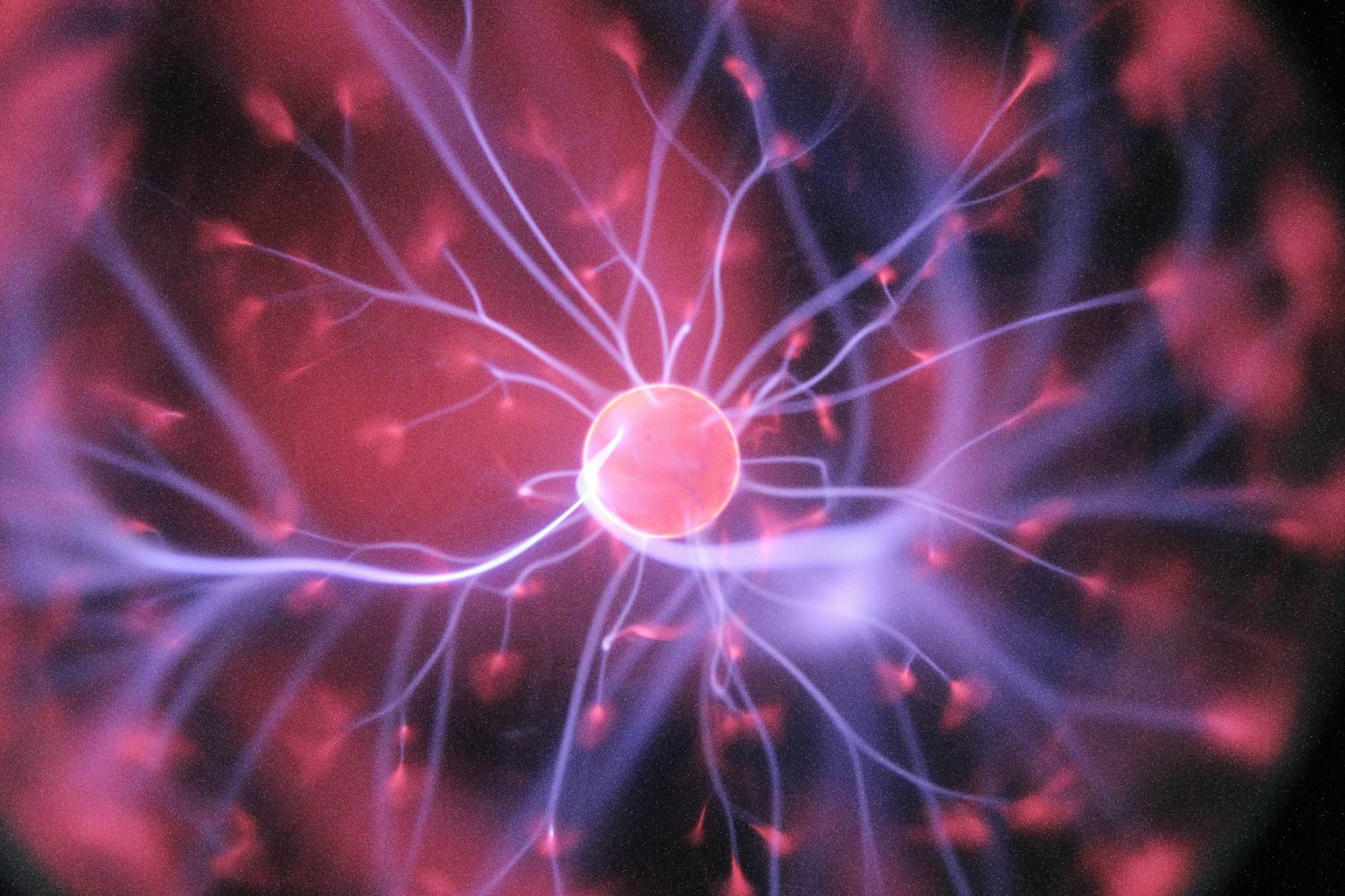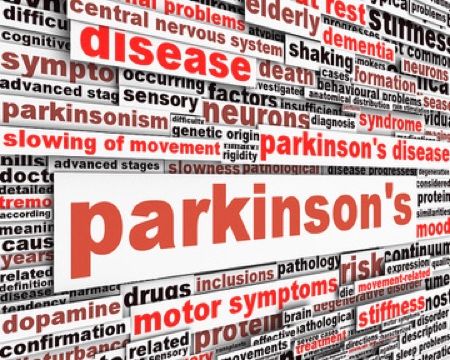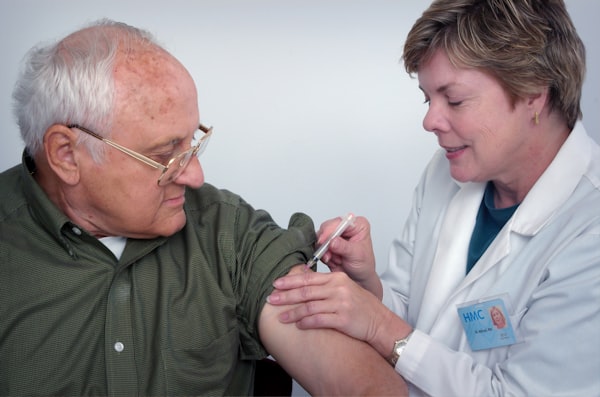What are the Symptoms of Parkinson's Disease?

Parkinson's Disease is a progressive neurological disorder that affects millions of people around the world. It is characterized by certain physical and cognitive changes that can cause significant disruptions in daily life. In this guide, we will be discussing what Parkinson's Disease is, the symptoms associated with it, treatment options, and resources for further information.
Parkinson’s Disease affects both men and women of all ages, though it is more common in older individuals. This debilitating condition can be difficult to live with, but with proper management, individuals can lead a productive life. In this guide, we will provide an overview of Parkinson's Disease, from the signs and symptoms to the treatments available. We will also provide important resources for those seeking additional information or support.
At the end of this guide, readers will have a better understanding of what Parkinson's Disease is and the types of symptoms associated with it. They will also be informed of the different treatments available and the resources available to them for more information and support.
What is Parkinson’s Disease?
Parkinson’s Disease is a neurological movement disorder that affects roughly one million Americans. It occurs when certain nerve cells in the brain die or become impaired and fail to produce dopamine, a chemical that normally helps control body movements. People with Parkinson’s Disease suffer from physical, cognitive, and autonomic symptoms, which can lead to disruptions in mood, sleep, and daily activities.
The average age of diagnosis of Parkinson’s Disease is around 60 years old, although it can develop in people as early as 21. It is more common in men than in women, although both are affected. Currently, there is no known cure for Parkinson’s Disease; however, there are treatments available to manage the symptoms.
While the exact cause of Parkinson’s disease is unknown, it is likely due to genetic and environmental factors. Research has shown that some individuals are more likely to develop Parkinson’s Disease due to certain genetic mutations, while others may be at higher risk due to living in an area with certain environmental toxins.
It is estimated that as many as 10 million people worldwide are living with Parkinson’s Disease.
Physical Symptoms of Parkinson’s Disease
Parkinson’s disease is an incurable neurodegenerative disorder that affects movement, balance, and coordination. People with Parkinson’s experience a range of physical symptoms that can seriously affect their daily lives.
The four core motor symptoms of Parkinson’s are tremor, rigidity, bradykinesia, and postural instability. A tremor is an involuntary shaking or trembling of the body or extremities. It is usually most noticeable in the hands. Rigidity is stiff muscles and joints that can cause difficulty moving around or be painful. Bradykinesia is slow movements that can make completing everyday activities difficult. Postural instability is when a person has difficulty keeping balance or walking in a straight line.
Other physical symptoms of Parkinson’s include difficulty swallowing, small handwriting, and drooling. Swallowing can become laborious due to reduced muscle control in the throat, making chewing and swallowing food difficult. The handwritten words of persons with Parkinson’s often appear much smaller than the writing of people without the condition. Saliva can accumulate and eventually drool out of the mouth.
People with Parkinson’s may also experience several non-motor symptoms. These can include depression, anxiety, fatigue, and pain.
Depression is common in Parkinson's patients and is caused by physiological changes in the brain. Anxiety can occur due to the worry and uncertainty associated with the disease. Fatigue is a feeling of extreme tiredness and is often caused by the constant efforts to move and stay upright. Pain can occur as a result of muscle rigidity or issues with coordination.
Parkinson’s disease is a serious condition that can significantly affect someone’s life. Knowing the various physical and non-motor symptoms can help in understanding and managing the disease.
Cognitive Symptoms of Parkinson's Disease
Cognitive symptoms are changes to a person's thinking and memory that can result from Parkinson's Disease, such as difficulty with concentration, judgment, or decision making. These changes may range from mild to severe and can have a significant impact on a person's quality of life.
When cognitive symptoms arise early in the course of the disease, they are known as ""dementia with Lewy bodies,"" while later symptoms are labeled ""Parkinson's Disease dementia."" It is important to note that these symptoms can happen even without developed motor symptoms.
Common cognitive symptoms include:
- Impaired judgment
- Difficulty solving problems
- Decreased ability to remember new information
- Confusion
- Loss of initiative
- Difficulty planning and organizing
- Apathy and decreased motivation
It is important for those experiencing Parkinson’s Disease to be aware of potential cognitive symptoms as early detection and treatment may be beneficial. Regular visits to your doctor can help monitor for any concerning changes in cognition.
In some cases, cognitive symptoms may improve with medication, while other times psychological therapies and lifestyle modifications can also help a person manage their cognitive symptoms. The goal is for everyone to become aware of their cognitive abilities and how to best manage them.
It is important to keep in mind that cognitive symptoms vary from person to person and can even vary in severity from day to day. It is essential to stay informed, get regular check-ups, and develop an individualized plan for managing cognitive symptoms.
Autonomic symptoms are an often overlooked part of Parkinson's disease, yet they can have a profound effect on day to day life. Autonomic symptoms, also known as autonomic dysfunction, refer to the impairments in the automatic nervous system that control unconscious bodily functions, such as breathing, body temperature, digestion and sleep.
People with Parkinson's disease can experience a variety of autonomic symptoms such as difficulty regulating body temperature, low blood pressure, constipation, excessive salivation, lightheadedness, and bladder control problems. Some of these symptoms can be improved through medications and lifestyle changes.
Temperature regulation can be difficult for people with Parkinson’s disease, which can lead to feelings of coldness and sometimes heat intolerance. This can cause a person to have difficulty keeping their body temperature normal and even lead to hypothermia. Low blood pressure is also an autonomic symptom, which can lead to dizziness or lightheadedness when standing up after sitting or lying down. Constipation is another common autonomic symptom experienced by those with Parkinson's disease, which can be caused by slow movements of muscles in the intestines or difficulty in swallowing, both of which are common side effects of Parkinson’s disease.
Excessive salivation or drooling is another autonomic symptom experienced by some people with Parkinson’s disease. This is caused by a lack of control over the muscles in the mouth and throat, leading to the release of saliva. Difficulty controlling bladder function is also a common symptom. Weakness or decreased coordination of the muscles used to control urination can lead to an inability to hold urine and involuntary leakage.
It is important to be aware of the autonomic symptoms associated with Parkinson's, as many of them can be managed or improved through lifestyle changes and medication. Monitoring these symptoms and keeping track of what triggers them is the best way to ensure that they are managed effectively.
Mood Changes and Parkinson's Disease
Parkinson's Disease (PD) is a neurological disorder that affects movement, but it can also cause changes in mood and behavior. People living with PD may experience depression, anxiety, apathy, irritability and impulsivity throughout the course of the disease.
Depression
Depression is a common symptom of PD. It is estimated that between 40-50% of people with PD will experience some form of depression. Some of the most common symptoms of depression include a feeling of sadness and worthlessness, loss of interest or pleasure in activities, irritability, changes in appetite and sleep patterns, difficulty concentrating, fatigue, and thoughts of death or suicide.
Anxiety
Anxiety is another common symptom of PD. About 26-49% of people with PD experience anxiety, which can negatively impact their quality of life. Anxiety symptoms may include excessive worry or fear, restlessness, racing thoughts, insomnia, panic attacks, chest pain and muscle tension.
Apathy
Apathy is a symptom of PD that affects the ability to plan, initiate, and persist with tasks. Apathy can impact social relationships, cognition, and activities of daily life. People living with PD may experience feelings of indifference or disconnection, decreased motivation, lack of interest in activities, or difficulty shifting attention or following through with an activity.
Irritability
Irritability is a common symptom of PD that can manifest as temper outbursts, anger, or rage. People living with PD may be frustrated by their inability to complete tasks or activities with ease, and this may lead to irritability.
Impulsivity
Impulsivity is another potential symptom of PD, and it is characterized by an inability to resist an urge or temptation. People with PD may struggle with decisions until they become overwhelmed and act impulsively. These behaviors can put them in dangerous situations or cause financial hardship.
It is important to recognize changes in mood or behavior due to Parkinson’s Disease and seek help. A qualified medical professional can help develop an individualized plan for managing these symptoms.
Sleep Symptoms
Parkinson’s disease can significantly disrupt a person's sleep. In some cases, the symptoms of Parkinson's can cause sleeplessness, and when sleep is achieved, the quality of it usually isn't very good. People with Parkinson's often find that they wake up frequently throughout the night, resulting in an overall lack of restful sleep.
Some of the common sleep disruptions associated with Parkinson's Disease include:
- Insomnia – Difficulty falling asleep, waking up frequently during the night, and difficulty staying asleep.
- Rapid-eye movement (REM) behavior disorder – Acting out of dreams due to difficulty controlling muscles during REM sleep.
- Circadian rhythm disruption – Disruption to the body’s natural 24 hour clock that regulates sleep patterns.
- Restless Legs Syndrome – Uncomfortable sensations in the legs that cause an irresistible urge to move around for relief.
- Excessive daytime sleepiness – Feeling sleepy and fatigued during the day despite getting enough sleep at night.
These sleep disruptions are not only incredibly disruptive, but can also worsen the physical and cognitive symptoms of Parkinson's Disease. In severe cases, these sleep disturbances can increase the risk of falls, confusion, and other serious health complications.
Treatment for Parkinson's Disease
When it comes to treating Parkinson's Disease, there are a variety of medications and medical procedures available. It is important to speak to your doctor or healthcare provider to determine the best treatment plan for you.
Medications used to treat Parkinson's Disease include: dopamine replacement therapies, anticholinergics, amantadine, catechol-O-methyltransferase (COMT) inhibitors, monoamine oxidase type B (MAO-B) inhibitors, glutamate antagonists, and experimental drugs.
Dopamine replacement therapies are usually the first line of treatment for Parkinson's Disease. This type of medication works by supplementing the dopamine that is naturally produced in the brain, which helps to control movement. Some of the dopamine replacement therapies include Levodopa or Carbidopa, Entacapone, Rasagiline, and Pramipexole.
Anticholinergics are another type of medication used to treat Parkinson's Disease. These drugs help to reduce the muscle stiffness that is common with the condition, as well as reduce tremors and reduce the amount of saliva production. Common anticholinergics are Benztropine, Trihexyphenidyl, and Procyclidine.
Amantadine is another drug used to treat Parkinson's Disease. It helps to reduce the severity of tremors, and can also improve patients' response time and decrease bradykinesia (abnormal slowness of movement).
COMT inhibitors are a class of drugs that work to block the enzyme responsible for breaking down dopamine. These drugs can help to increase the amount of dopamine in the brain, which helps to improve movement in people with Parkinson's Disease.
MAO-B inhibitors are drugs that help to increase the amount of dopamine in the brain by blocking the enzyme that breaks down dopamine. Examples of MAO-B inhibitors include Selegiline, Rasagiline, and Safinamide.
Glutamate antagonists are drugs that help to reduce the symptoms associated with Parkinson's Disease by blocking the neurotransmission caused by the neurotransmitter glutamate.
In addition to medications, various medical procedures are used to help treat symptoms of Parkinson's Disease. These include deep brain stimulation (DBS), thalamotomy, and ultrasound therapy.
Deep brain stimulation (DBS) involves implanting a device into the brain that sends electrical signals to certain areas of the brain in order to reduce the effects of the disease. Thalamotomy is a minimally invasive procedure that involves destroying certain parts of the brain in order to stop the overactivity associated with Parkinson's Disease.
Ultrasound therapy is a newer form of treatment that is non-invasive and involves using sound waves to target certain areas of the brain in order to reduce stiffness and improve mobility.
It’s important to remember that each person’s experience of Parkinson's Disease is unique and what works well for one person may not work for another. Therefore, it is important to discuss all possible treatments with your doctor in order to find the best and safest treatment plan for you.
Finding Resources for Parkinson's Disease
If you or someone you know has been diagnosed with Parkinson's Disease, it can feel overwhelming to be faced with so much information about this condition. It is important to remember that there are many resources available to help you learn about the disease and how best to manage it. Here are some helpful resources for anyone looking for information on Parkinson's Disease.
- National Parkinson Foundation: The National Parkinson Foundation website provides up-to-date information on research and treatments for Parkinson's Disease, as well as support programs and resources. https://www.parkinson.org/
- WebMD: This website offers comprehensive information about Parkinson's Disease, including symptom management, treatments, and related conditions. https://www.webmd.com/parkinsons-disease/default.htm
- Parkinson's UK: This charity provides an online community and resources for those affected by Parkinson's Disease living in the United Kingdom, including information on local support groups, research, and local services. https://www.parkinsons.org.uk/
- Parkinson's Disease Foundation: This organization offers online resources and educational materials to help people with Parkinson's Disease and their caregivers learn about the condition and how best to manage it. http://www.pdf.org/en/parkinson_disease_overview
These are just a few of the resources available. There are many other organizations and online communities dedicated to providing information and support for people living with Parkinson's Disease. If you are looking for additional information or support, be sure to visit one of the websites listed above or speak with your doctor or healthcare provider for further guidance.
Frequently Asked Questions about Parkinson's Disease
Parkinson’s Disease is a complex and progressive condition that can be difficult to understand. Below are answers to some of the most frequently asked questions about Parkinson’s Disease.
- What are the main symptoms of Parkinson’s Disease?The primary symptoms of Parkinson’s Disease are tremor (a trembling or shaking), slowness of movement, rigidity or stiffness of the muscles, impaired balance and difficulty with walking. Other symptoms can include changes in mood or behavior, cognitive changes, autonomic changes and sleep disturbances.
- What causes Parkinson’s Disease?The exact cause of Parkinson’s Disease is unknown, but it is thought to be related to a combination of genetic and environmental factors. It is believed that a combination of genetic and environmental conditions lead to abnormalities in the brain that cause the signs and symptoms of Parkinson’s Disease.
- Is Parkinson’s Disease an inherited condition?The exact cause of Parkinson’s Disease is unknown, however, there is a small chance of inheriting the disease through familial genes. In these cases, the disease may begin at a younger age than it does with those who don’t have familial risk factors.
- Can Parkinson’s Disease be treated?Yes, Parkinson’s Disease is a treatable condition. Treatment focuses on relieving the symptoms and improving quality of life. Treatments may include medications, physical therapy, occupational therapy, speech therapy and support groups.
Conclusion
Parkinson’s disease is a neurological disorder that affects millions of people around the world. It is a progressive condition and can cause physical, cognitive, autonomic, mood, and sleep disturbances. Treatments for Parkinson’s are varied and can help to manage symptoms and improve quality of life.
It is important for individuals with Parkinson’s disease to be aware of the signs and symptoms to watch out for. Some of the most common physical symptoms include tremors, slowed movement, rigidity, difficulty or an inability to move, impaired balance, and changes in speech. Cognitive symptoms can include memory problems, difficulty with executive functions, hallucinations, and cognitive fluctuations. Autonomic symptoms may include constipation, bladder control issues, trouble regulating blood pressure, and difficulty controlling body temperature. Mood changes can range from depression and anxiety to apathy. Lastly, sleep disruptions such as insomnia and restlessness can occur during sleep.
Individuals with Parkinson’s disease should seek appropriate medical care from a qualified doctor. Regular follow-ups and consultations are important to ensure that symptoms are monitored and managed properly. Additionally, it is important to connect with support groups and other resources for emotional support, to find information about the latest treatments, and to learn more about managing the disorder.
With the right support and treatment, individuals with Parkinson’s can continue to lead meaningful and fulfilling lives. It’s important to remember that every individual’s experience of Parkinson’s will be different, but there are many resources available to help manage the condition.
References
- Parkinson’s Foundation. (2021). What is Parkinson's?. Retrieved from https://www.parkinson.org/understanding-parkinsons/what-is-parkinsons
- Mayo Clinic. (2021). Parkinson's Disease. Retrieved from https://www.mayoclinic.org/diseases-conditions/parkinsons-disease/symptoms-causes/syc-20376055
- National Institute of Neurological Disorders and Stroke. (n.d.). Parkinson's Disease: Hope Through Research. Retrieved from https://www.ninds.nih.gov/Disorders/Patient-Caregiver-Education/Hope-Through-Research/Parkinsons-Disease-Hope-Through-Research
- National Parkinson Foundation. (2021). Parkinson's Disease Treatment. Retrieved from https://www.parkinson.org/understanding-parkinsons/treatment
You might also like this article:








